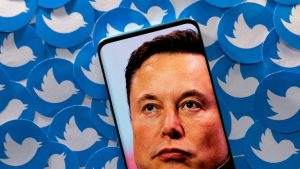How to Save Twitter Without Nuking It and Starting Over
So I’m sure we’re all at least somewhat familiar with the drama behind Elon Musk’s acquisition of Twitter. First Elon Musk revealed that he had enough Twitter stock to equal a 9.2% stake and offered to take it private. Twitter’s board of directors dithered around about it for a bit, and then accepted the offer. So did stockholders in a vote.
Then Elon Musk seemed to get cold feet, leading Twitter’s board of directors to file legal action. Finally, Musk capitulated and closed the deal on the week of October 27, 2022, just before a deadline set by a judge.
In retrospect, Twitter’s previous shareholders must’ve known they wouldn’t get a better offer than $54.20 per share. Musk began laying off employees – those who hadn’t already quit, anyway. The layoffs included Twitter’s now-former CEO and CFO. Some of the affected employees filed a lawsuit, alleging that Musk violated federal and California state law setting conditions for laying off employees.
He tried different things, like charging $8 a month for “premium” Twitter that included the Verified blue tick mark, then backed off after backlash. Major corporations suspended their advertising, citing a rise in hate speech since Musk took over. Celebrities either deleted their accounts in protest or got suspended for mocking Musk’s added rule of not “spoofing” an account without clarifying that it’s a parody account.
(The new rule may not be unwarranted, though. Musk won’t have forgotten that his account was one of several prominent accounts that got hacked by scammers and fake accounts have been a problem on Twitter for a long time. People lost millions of dollars’ worth of cryptocurrency in that one.)
Now Musk is making noise about having Twitter file for bankruptcy. The new move could indicate that Twitter has been a trainwreck for a while. Musk already saved two companies from near-bankruptcy, so the situation must be serious. But can it be saved?
How to Revive Twitter Without Losing Its Core
Okay, Elon Musk, you did make mistakes. However, the situation probably isn’t unsalvageable if you can get Twitter’s act together and don’t forget that you’re now its CEO. It’s not like corporations haven’t filed for Chapter 11 bankruptcy before and survived. Whatever you do, do NOT give up the URL (aka web address), the website, or the core functionality.
Remember, Twitter got big as a social media platform. It’s got the built-in user base even with so many people leaving. The thing is to keep the core platform and build around it.
Twitter needs monetization options besides unreliable advertising. It needs new ways that members can post their thoughts, interact with one another, and potentially earn a cut of the revenue they generate (with reasonable moderation, of course). And it needs a “Twitter marketplace” that uses the money transmitter business and multiple payment options.
Multiple Resource Streams
Okay, that $8 “blue tick mark” was a bad idea. It was going to get misused by anyone who had $8 to spare or figured they would make it back by impersonating prominent figures and scamming people. However, what Elon Musk got right is that Twitter needs revenue streams other than the default monetization option of the Internet: advertising.
The situation is getting serious. A lot of big corporations were suspending their advertising on Twitter because they didn’t want to be associated with what could be most kindly described as Musk’s “We need to break it before we can fix it” approach to the whole thing.
Some corporations seem unwilling to give up on the audience, though. Lenovo is still there, and I still see some movie ads. But even before Musk took over, he would have looked at Twitter’s books and could have realized that the financial situation was serious enough to justify massive layoffs.
There are plenty of social media sites that try to get around this by letting its users pay a monthly fee for an “ad-free version” of their platform. Reddit does it. So does YouTube. However, the weakness with YouTube’s version is that its video ads can be blocked by the Brave Browser anyway. It’s great for having your YouTube music playlists playing in the background without being annoyed by ads but not so great if your goal is to monetize your site with ads or a “subscription ad-free” package. People will find a way around it.
But what if you didn’t have to rely on advertising at all? Twitter already had “Twitter Blue,” which granted early access to features like editing tweets, NFT profile pictures, and 1080p video uploads. It promises that “Coming Soon” features include uploading longer videos, fewer ads, and boosts in the visibility of tweets without having to spend extra to promote them. Right now, it’s only available on the Twitter iOS App, but that could stand to be expanded to include desktop operating systems and Android.
More Twitter features also means the opportunity for more premium features, like the ability to read so many free articles that would normally be behind a paywall or get discounts when using an attached online marketplace.
If you get really stumped, you could also sell swag.
Everybody has a story to tell.
Plenty of people post Twitter threads that could’ve been blog posts. It’s hard to really expand on your thoughts with 280 characters unless you do a thread. However, anyone who sees that thread might find it annoying because then they have to click on the first tweet to see it and then read through a long, strung-out thread.
I’m sure they’d rather have a blog attached to their Twitter account, right? Then it could be more like me tapping out a really long blog post and then posting a link to it on Twitter, only Twitter would be the one paying for hosting. It becomes a supplement for the core platform that allows 280-character tweets because people can expand on their reasoning more easily and still post a link to it on their main Twitter account.
The main thing is to add the features that people would expect for a blog, like embedding videos and tweets, adding pictures, and perhaps even adding their own affiliate links when appropriate. Add categories and a good search feature and Twitter could have it made.
People who really have something to say could even have their own online subscription magazines. If you’re that person who got an A+ on your high school term paper or do well at technical writing, you can try spinning up a magazine, basically. (Would totally be recommended not to rehash information that’s already widely available online for free, though.) When premium Twitter members view one of their articles, they might even get a few cents out of it.
I’d likely be one of the first to use a Twitter content platform if it can do a good job of it. It’s no big deal if it rolls out some of the basics like having a good text editor and the ability to embed pictures, videos, and Tweets on each post.
Some ways Twitter could monetize this:
- Charge a little DOGE per post. A content site called Yours.org used to charge its members a one-time fee of ten cents for every post they published before it (apparently) went out of business. (LPT: Don’t let your startup get caught up in major disputes in the crypto industry.) Yours.org said this small charge was meant to combat spam – yes, the same spam that Elon Musk seems to hate so much. However, this can be a good money-maker for a site like Twitter that already has a big established marketplace.
- Make it easy to add affiliate links through Twitter’s own affiliate accounts. Squidoo used to do this before it got sold to HubPages and wrapped up in another website. The creators of its content could add products from Amazon, eBay, and a few other sites, and then Squidoo split the affiliate revenue 50-50 with them.
- Charge a percentage of what people make through their subscription magazines. Like, it doesn’t have to be a big percent. 5% tops. A lot of the top online magazines could earn thousands of dollars every month easily just by keeping their content updated.
A Twitter Marketplace
Twitter already registered “Twitter Payments LLC” with FinCEN. Now why would it need a money transmitter business? One obvious answer: It means to spin up a marketplace of some sort.
It could go with some of the obvious marketplace options. However, NFTs are already getting seen as so yesterday and there’s already enough “digital goods” marketplaces that get dominated by people selling game codes. It’d have to take a little extra time to get this one right.
One promising thing is that the crypto exchange Binance owns a minority stake in Twitter now. While it might be really annoyed with Elon Musk right now, it did express an interest in helping with any crypto- and blockchain-related efforts. (Remember, this is the company that walked away from acquiring FTX. It won’t buy into a situation that it doesn’t think is salvageable.)
Binance may be a little disappointed that Twitter isn’t just using Binance Pay. However, Twitter could customize “Twitter Payments LLC” however it wants. Do the really complicated legacy stuff like plastic cards, PayPal (obviously), Venmo and ACH “bank transfers.” Or just slap a few crypto addresses into a system that sends the funds to “self-hosted wallets” and call it a day.
The big thing is to combat fraudulent sales as much as possible. NFT creators inflating the price by selling it to themselves was really on the low end of the issue. Ebay is notorious for having poor anti-fraud measures. There is such a thing as real estate fraud.
Twitter could solve some of these issues by limiting what can be listed on its future marketplace and being responsive to fraud. A solid response could involve an actual investigation or even referring it to law enforcement if it’s severe enough. Maybe it could also scale it back by requiring sellers to verify their identities rather than simply paying $8 for a blue tick mark. (I know how annoying it can be to upload a good photo of your ID but at least it’ll make it less likely that law enforcement will target you because some heel impersonated you and made fraudulent sales.)
Sounds like a lot of work, doesn’t it?
It will take quite a bit of development. Doing a good job of creating a new content platform and marketplace from scratch won’t be easy. I don’t even expect to see some of this stuff for a few years, if it even gets done.
However, when Elon Musk led the charge of taking Twitter private, he was really buying a platform with a big existing user base. That’s why he got so upset when he thought Twitter’s former board of directors wasn’t being straight with him about the number of bots on the platform. (To be fair, a sample of 100 accounts WAS probably way too small to give a clear picture.) He probably knew he’d have to do some housecleaning; he just needed a better idea of exactly how big of a mess it was.
The situation can be salvaged, though. The familiar 280-character-tweets, trending topics, and suggested accounts to follow could form the core of an expanded Twitter that includes more monetization options, a content platform, and a marketplace.








